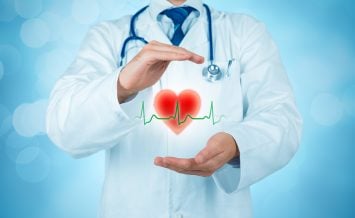Can you save your garden after your summer holiday?
Even your grass, plants and flowers have the post-holiday blues
Returned from holiday to find bedraggled plants, an overgrown lawn, herbs and flowers which have run to seed and a glut of crops you couldn’t give away?
So, what do you do?
Don’t despair

Rain may have saved the day
The rain we’ve had this summer may have gone some way to saving flower borders, but containers left in sheltered spots may have dried out without the luxury of an automatic irrigation system, or a friendly neighbour to water them in your absence.
Guy Barter, RHS chief horticultural adviser, reckons that if your bedding plants haven’t dried out completely, you should have a month of good growing weather left in the south of the country and a little less in the north.
“The recent wet weather will have helped gardens enormously, but containers are still likely to be fairly dry, so you need to give them a really good soak, deadhead the flowers and give plants a good feed,” he advises.
Cut back and feed container plants

Bedraggled petunias
Container plants, including petunias, can be cut back and should produce another burst of growth, provided the slugs haven’t devoured the base of the plants during the rainy period, he says.
You should also be able to give trailing plants such as lobelia and bacopa a haircut and a feed, to prompt them into further flowering.
Watch out for slugs

Slugs feast on plants in wet weather
“People who have been away during the wet weather should be prepared to come back to find a lot of slug damage,” he adds. ”They will eat petunias around the base and feast on hosta leaves, and the plants will not produce more leaves this year.”
It may be wise to feed vulnerable plants with nematodes, biological controls which are specifically designed to attack slugs and vine weevil.
Be aware that many biological controls become less reliable when the temperature drops, as the predatory insects which provide the control then multiply more slowly. Check for greenfly and blackfly and take off shoots on plants which are infested and dispose of them.
Grab plant bargains

Bargain lupins may be on offer
“You can also get some plant bargains at garden centres at this time of year, including herbaceous perennials such as delphiniums and lupins, which have finished flowering, but should grow strongly next year and hopefully be free of mildew.”
Tackle overgrown lawns

Overgrown grass
You may be returning to long grass, which will have been growing thanks to the mixed weather we’ve had in summer. When tackling it, Guy recommends not taking off more than a third at a time until it has recovered and don’t feed the lawn until autumn.
As for vegetables, you should be returning home to bumper crops, although tomato blight tends to appear in warm, wet weather and if your plants succumb, there’s not a lot you can do apart from consign them to the bonfire.
Giant veg may have to be ditched

Courgettes may have grown into marrows
“You may have enormous marrows when you actually wanted courgettes and rather tough, stringy beans which have been left too long for picking. But some of the overgrown veg could go into chutneys.”
Lettuces may have bolted or been damaged by slugs and if they are, lift them and replace them with other crops such as Chinese leaves and spinach, while mustard seeds can also be sown for green manure. Spring onions can also be sown now, where they are to mature and left to overwinter until they are ready for harvesting in spring.
Fill gaps in borders

Fill gaps with dahlias
Fill gaps in flowerbeds with dahlias, which can be lifted at the first frosts, the tubers stored in a frost-free dry place, then replanted next year.
Dunk container plants

Give containers TLC
Containers holding year-round-interest plants, such as shrubs or evergreens, may benefit from being submerged in a bucket of water to re-wet the compost, but it is difficult to tell if the compost is thoroughly soaked and important not to waterlog the plants.
After re-wetting, robust architectural plants, such as phormiums and box, can be lifted out of their containers with their root system intact, so you can see if the compost has been completely soaked through.
Continue to deadhead roses and cut back finished summer-flowering perennials, removing supports which propped up the plants that have stopped flowering. These can be cleaned with a mild detergent and put away until next year.
And if all else fails…
Steal a march on the cooler months by clearing out wilted bedding plants from pots and invest in some spring bulbs and other plants for autumn and winter.
The Press Association
Latest posts by The Press Association (see all)
- 8 things your feet can tell you about your health - January 8, 2025
- 9 ways to look after your emotional health better in 2025 - January 7, 2025
- EastEnders fans to vote on storyline for the first time in 40th anniversary week - January 7, 2025
- Aldi beats rival Lidl as cheapest supermarket of 2024 - January 6, 2025
- All the benefits of lifting weights beyond bigger muscles - January 6, 2025





















